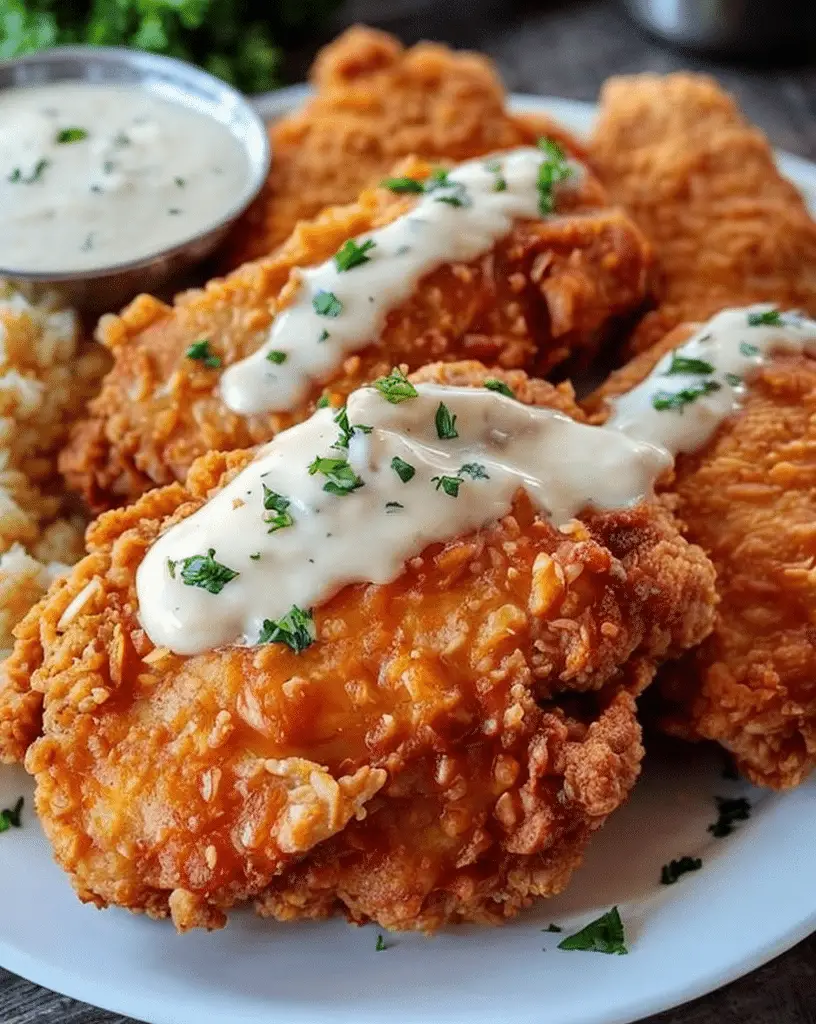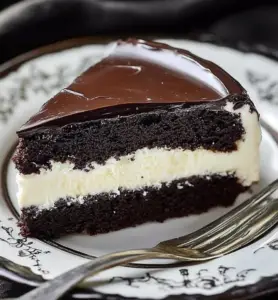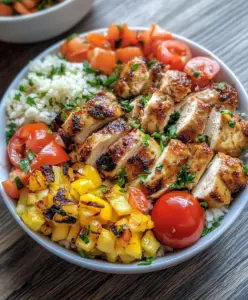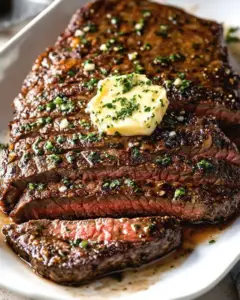Chicken Fried Chicken: Southern Comfort on a Plate
Embark on a culinary journey through the heart of Southern cooking with the mouthwatering Chicken Fried Chicken. This beloved classic brings together tender, juicy chicken enveloped in a perfectly seasoned, golden-brown coating. Every bite is an experience, a harmony of textures and flavors that transport you to a place of comfort and nostalgia. Whether it’s a family dinner or a special gathering, this dish is sure to delight and impress.
The magic of Chicken Fried Chicken lies in its masterful blend of spices and its decadent, crispy crust. Imagine sinking your teeth into the crispy exterior, giving way to the succulent chicken inside, all perfectly seasoned to tantalize your taste buds. The aromas wafting from the pan alone can evoke memories of home-cooked meals shared with loved ones. Incorporating simple pantry ingredients, this recipe is as accessible as it is delicious, making it a perfect choice for any home cook looking to create a respite from the ordinary.
Quick Recipe Highlights
- Flavor Profile: Savory, with a hint of spice from the seasoning blend, complemented by the richness of the crispy crust.
- Texture: Crispy crust that gives way to juicy, tender chicken, creating an unmatched mouthfeel in every bite.
- Aroma: Delightful notes of savory spices filling your kitchen, promising a meal to remember.
- Visual Appeal: Golden-brown and perfectly crispy, presenting beautifully on the plate.
- Skill Level Needed: Accessible to most home cooks; requires basic frying techniques and seasoning skills.
- Special Equipment: A deep skillet or frying pan, thermometer, and a wire rack for optimal frying results.
Recipe Overview
- Difficulty Level: Ideal for beginners to intermediate cooks. The recipe focuses on simple frying techniques and measuring seasonings accurately to enhance the chicken’s flavor.
- Category: Main Course. Perfect for lunch or dinner, paired with your favorite sides.
- Cuisine: A classic of Southern cuisine, embodying the warmth and heartiness of home-style cooking traditions.
- Cost: Affordable, particularly when utilizing pantry staples and seasonal ingredients. Chicken is an economical protein choice.
- Season: Best enjoyed all year round, with seasonal side dishes providing variety through the changing seasons.
- Occasion: A versatile dish perfect for family dinners, Sunday lunch, or casual gatherings with friends.
Why You’ll Love This Recipe
The taste and texture of Chicken Fried Chicken are simply irresistible. The seasoned coating provides a delightful crunch, while the juicy chicken inside offers a satisfying and flavorful contrast. Each bite is a testament to American Southern cooking and its ability to create comfort food that warms both the heart and soul.
Convenience is another standout feature of this recipe. With minimal preparation time and straightforward cooking steps, you can have a delicious meal ready in under an hour. This makes it an excellent choice for busy weeknights when you crave something home-cooked without the lengthy preparation.
On the nutritional front, chicken is a great source of lean protein, making this dish both hearty and healthful. While the frying process does add some fat, enjoying this dish in moderation can fit well into a balanced diet.
From a social perspective, serving Chicken Fried Chicken is sure to impress your guests. Its universal appeal and rich flavors make it a crowd-pleaser at any gathering, and it’s a dish that’s bound to spark conversation and fond memories of comfort food favorites.
Cost-wise, this recipe is an economic powerhouse. Chicken as the main ingredient keeps expenses low, while the spices and flour used for the coating are inexpensive pantry staples. This accessibility makes it an ideal choice for budget-conscious home cooks who do not want to compromise on taste and quality.
Historical Background and Cultural Significance
The origins of Chicken Fried Chicken can be traced back to the traditional fried chicken recipes brought over by Scottish immigrants in the southern United States. Over time, these recipes evolved, incorporating local spices and techniques to create what we now celebrate as a quintessential Southern dish.
Culturally, Chicken Fried Chicken holds a special place in American cuisine, symbolizing the warmth and hospitality of Southern cooking. It is a staple at community gatherings and family dinners across the region, embodying the spirit of sharing and togetherness.
As with many beloved dishes, Chicken Fried Chicken has seen its share of evolution. From adapting to modern dietary preferences to trying out different regional spice blends, this recipe continues to delight and surprise with its versatility and capacity for reinvention.
Regional variations abound, with each Southern state offering its unique twist on the classic recipe. Whether incorporating a touch of heat with cayenne or serving it with a side of creamy gravy or coleslaw, these adaptations showcase the creativity and diversity of Southern communities.
Ingredient Deep Dive
Chicken is the star of this recipe and is deeply rooted in Southern cooking traditions. Its versatility and mild flavor make it an ideal canvas for the bold spices and crispy coating characteristic of Chicken Fried Chicken. Chicken is rich in protein, essential vitamins, and minerals, making it a healthy choice when prepared mindfully.
When selecting chicken for this recipe, opt for quality over quantity. Fresh, organic chicken will provide the best flavor and texture, transforming your dish from good to great. Store chicken properly in the refrigerator, ensuring it’s consumed within a few days for optimal freshness. If needed, substitute chicken breast with thighs for a richer flavor.
Flour serves as the base for the crispy coating, lending structure and a delightful crunch to each bite. A staple in every kitchen, flour is versatile and easy to find, ensuring accessibility to all who wish to recreate the dish. For those on gluten-free diets, almond or rice flour can be used as alternatives to achieve a similar texture.
Common Mistakes to Avoid
- Not seasoning the chicken well before coating: This can lead to bland flavor. Ensure even distribution of spices directly on the chicken to enhance taste.
- Skipping the resting time: Allow the coated chicken to sit for a few minutes before frying to help the crust adhere better and cook evenly.
- Using oil at the wrong temperature: Too low will result in oily chicken; too high can burn the exterior. Aim for a steady temperature around 350°F (175°C).
- Overcrowding the pan: This drops the oil temperature and can lead to uneven cooking. Cook in batches to maintain ideal frying conditions.
- Not monitoring internal temperature: Use a meat thermometer to ensure the chicken reaches an internal temperature of 165°F (74°C).
- Storing improperly: Keep fried chicken in a single layer on a wire rack to maintain its crispiness.
- Using stale spices: Fresh spices make a huge difference in taste. Regularly check spices for freshness and potency.
- Skipping the drying step: Pat the chicken dry with paper towels before dredging to prevent moisture from affecting the coating.
- Not using a thermometer: Without it, gauging oil temperature can be tricky, leading to undercooked or burnt chicken.
- Ignoring resting time post-cooking: Let the chicken sit for a few minutes to allow steam to dissipate, retaining crispiness.
Essential Techniques
Mastering the perfect fry is crucial for this dish’s success. A key component is maintaining a consistent oil temperature. This ensures a crispy exterior while cooking the chicken through without burning. Test the oil with a small piece of coating; it should sizzle gently upon contact.
The art of seasoning cannot be overstated. Every layer of this dish benefits from robust seasoning—both the chicken and the coating. Choosing spices that complement each other transforms a simple dish into something extraordinary.
A proper dredging station requires organization. To streamline the process, set up a station with bowls of seasoned flour, egg wash, and more flour. This assembly line approach keeps your kitchen tidy and efficient.
Pro Tips for Perfect Chicken Fried Chicken
Opt for bone-in chicken for added flavor. The bones contribute to a richer taste profile, making each bite deliciously satisfying.
For the crispiest crust, double-dredging is your friend. Coat the chicken in flour, dip in egg wash, then coat again for maximum crunch.
Experiment with spice blends to make the recipe your own. Add a pinch of paprika or cayenne for a subtle kick that elevates the dish.
Let the chicken rest after dredging and before frying. This helps the coating adhere and prevents it from sliding off during cooking.
Use a mix of oil and shortening for frying. The combination can enhance flavor and achieve the golden crust we’re after.
Refrain from covering the pan while frying. This prevents steam from building up and softening the crust.
Different oils impart subtle flavor differences. Peanut oil is an excellent choice for its high smoke point and complimentary nutty taste.
Invest in a high-quality thermometer. Precise oil temperature control is key to achieving restaurant-quality results at home.
Variations and Adaptations
Regional variations include Mississippi’s buttermilk marinade or Texas’s cayenne kick. Each adjustment brings its unique twist to the classic.
Embrace seasonal ingredients by incorporating the freshest herbs and spices. Think oregano in Spring or dill in Summer to brighten up the dish.
For those with dietary restrictions, substitute flour with a gluten-free alternative, and explore milk substitutes in the egg wash for dairy sensitivity.
Inject variety with different seasonings: a splash of ginger or garlic powder adds complexity, highlighting the dish’s versatility.
Altering the texture is as simple as adjusting breading techniques—experiment with crushed cornflakes or panko for a different crunch.
Presentation is an art. Consider slicing cooked chicken into strips for easy serving, or serve whole pieces accompanied by colorful, seasonal salads.
Serving and Presentation Guide
To elevate presentation, contemplate serving on large, white plates, allowing the chicken’s golden-brown color to shine.
Garnish with freshly chopped parsley or dill for a pop of color and freshness that complements the heaviness of fried food.
Traditionally served with creamy mashed potatoes and gravy, this dish benefits from any starchy side that can soak up leftover flavors.
Explore the harmony of textures with modern side suggestions like quinoa salad or roasted vegetables bursting with flavor.
Maintaining temperature is crucial for optimal enjoyment. Arrange fried chicken on a warmed platter to retain heat until served.
Portion size matters. Aim for one or two pieces per person, allowing guests to savor without overwhelming their plates.
Wine and Beverage Pairing
A well-chosen wine enhances the dining experience. Chardonnay with its buttery notes perfectly complements the richness of the dish.
For a non-alcoholic alternative, sweetened iced tea or a citrus spritzer cuts through the savory flavors, balancing the meal.
If coffee or tea accompanies the meal’s conclusion, opt for a light roast coffee or floral tea to cleanse the palate.
It’s essential to serve these beverages at the correct temperature. Wine should be adequately chilled, while coffee or tea remains warm.
Consider offering wine in elegant glassware for a sophisticated touch, and individual pitchers for iced tea prevent dilution from melted ice.
Storage and Shelf Life
Proper storage enhances the shelf life of leftovers. Airtight containers help retain the crispness of the coating.
Refrigeration is essential. Store within two hours of cooking, ensuring temperature remains below 40°F to prevent bacterial growth.
Glass containers with tight-fitting lids are recommended for preserving flavor while avoiding plastic’s odor absorption.
Monitor leftovers for spoilage; any off smells or slimy textures indicate the need for disposal.
Reheat leftovers in a preheated oven at 350°F for 10 minutes to retain crispness; avoid microwaving, which can lead to sogginess.
For long-term storage, freeze cooked chicken in a single layer on a tray before transferring it to freezer-safe bags.
Make Ahead Strategies
Efficient preparation is achievable with a structured timeline. Coat chicken in advance, storing it covered in the refrigerator overnight.
Between initial frying and final assembly, store components separately to maintain freshness and prevent sogginess.
Although fresh is best, pre-prepping spices and marinades a day ahead saves time without compromising flavor integrity.
During assembly, ensure temperature control to avoid overly chilled ingredients negatively affecting overall compilation.
When reheating, infuse with freshness by adding a dash of lemon zest or chopped herbs for brightness and vibrancy.
Scaling Instructions
Scaling recipes requires careful recalibration. When halving, maintain precision in spice measurements to keep flavor consistent.
Inspired by large gatherings? Double or triple the recipe, ensuring frying batches are still manageable to maintain quality.
Adjust equipment size accordingly. A larger skillet may be needed to handle increased quantities without compromising crispness.
Cooking times should adapt accordingly, with monitoring required to anticipate subtle variances that double batching may incur.
Consistency is key. ‘Divide and conquer’ when scaling storage methods by pre-portioning after cooking to streamline future servings.
Nutritional Deep Dive
The protein-rich nature of chicken provides biological needs related to repair and growth while maintaining amino acid balance.
Micronutrient analysis reveals a healthy dose of B-vitamins, contributing to cell metabolism, alongside essential minerals like phosphorus.
When consuming in moderation, Chicken Fried Chicken aligns with dietary considerations, offering an enjoyable experience with health benefits.
Single portions support weight management, aligning with structured nutrition advice for maintaining healthy caloric intake.
Alternative preparations, like oven-baking, offer further health advantages by reducing oil use and maintaining flavor depth.
Dietary Adaptations
For gluten-free options, switch to alternative flours like chickpea or almond, maintaining a sturdy coating without compromising taste.
Opting for plant-based substitutes in egg wash caters to vegan dietary preferences, still achieving crispy coating resilience.
Keto enthusiasts benefit from almond or coconut flour’s low-carb nature, enhanced with garlic powder for flavor.
Paleo adherence is made sweeter with tapioca and arrowroot flour mixes to stay aligned with ancestral nutrition models.
For those with lactose intolerance, milk substitutes like almond milk or coconut milk in the batter offer seamless adaptation.
Troubleshooting Guide
Address texture issues by reassessing oil temperature, maintaining consistent degrees to prevent unwanted sogginess or charred surfaces.
If flavor balance proves elusive, scale back on salt or adjust spices to find palatable proportions without overwhelming taste buds.
Temperature solutions lie within rigorous monitoring during both preparations to ensure food safety compliance, while achieving optimal warmth.
Overcoming equipment challenges involves ensuring proper size and quantity conformity regarding frying pans or thermometers for precision.
Ingredient substitutions based on preference or necessity require research into taste profiles and textural outcomes to maintain integrity.
By managing timing concerns with mindful planning, each step receives proper attention to foster successful culinary assembly.
Recipe Success Stories
Our readers have praised this recipe for its foolproof approach to creating perfect Chicken Fried Chicken, with crispy exteriors and juicy interiors.
One reader attributes their success to experimenting with spice variations, discovering new favorites through feedback from family testers.
Adaptations abound in our community, as members share regional influences or preferences, resulting in personalized renditions cherished for years.
Photography tips enhance presentation, fostering creative plating opportunities while showcasing culinary craftsmanship to visually entice.
Readers’ suggestions, such as using buttermilk for marination, provide insight into evolving techniques for long-term recipe refinement.
Frequently Asked Questions
How do I keep leftover chicken crispy? Store leftovers in a single layer and reheat in the oven to maintain crispiness, avoiding microwaves as they introduce moisture.
Can I bake this instead of frying? Yes, while it won’t yield the same results, applying an oil spray before baking at 400°F (204°C) can create a respectable texture.
Is it possible to air-fry the chicken? Definitely, air frying at 375°F (190°C) for around 25 minutes offers a healthier alternative while preserving flavor.
How can I test if my oil is hot enough? Drop a small piece of bread or a pinch of flour; if it sizzles immediately, the oil is ready for frying.
Why is my coating falling off? Ensure the chicken is dry before dredging and that each layer of breading is firmly pressed onto the chicken.
What should I serve with Chicken Fried Chicken? Classic accompaniments include mashed potatoes, coleslaw, or a fresh green salad, offering balance to the fried nature of the dish.
Can I use chicken thighs for this recipe? Absolutely, chicken thighs add richness and moisture for those preferring darker meat options.
How can I infuse more flavor? Marinating chicken in buttermilk and spices overnight amplifies flavors, and freshly ground spices offer depth.
What’s the best way to ensure even cooking? Maintain oil at a consistent frying temperature and turn the chicken regularly for even heat distribution.
Where can I find gluten-free flour? Most major grocery stores carry it alongside other specialty baking products, ensuring easy access.
Additional Resources
Explore related recipes such as Southern Buttermilk Biscuits or Classic Cream Gravy to extend the dining experience and explore complementary Southern flavors.
Master the art of frying through technique guides that delve into oil management, crust adherence, and temperature regulation.
Discover more about chicken’s culinary versatility from ingredient information guides, focusing on storage, flavor pairings, and preparation methods.
Gain insight into essential kitchen equipment like thermometers or cast iron skillets, enhancing both the ease and outcome of cooking endeavors.
Consider seasonal variations, drawing inspiration from available ingredients like fresh corn or herbs to tailor the dish to specific times of the year.




